- Clone
- J036G3 (See other available formats)
- Regulatory Status
- RUO
- Other Names
- Interferon gamma-inducible protein 10 (IP10), Interferon gamma induced factor, gIP-10, IFI10, INP10
- Isotype
- Mouse IgG2a, κ
- Ave. Rating
- Submit a Review
- Product Citations
- publications
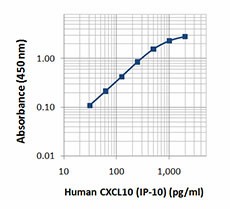
-

-

Western blot analysis of 50 ng of recombinant human CXCL10 (IP-10) (lane 1) and 50 ng of recombinant mouse CXCL10 (IP-10) (lane 2) using anti-human CXCL10 (IP-10) (clone J036G3) antibody.
| Cat # | Size | Price | Quantity Check Availability | Save | ||
|---|---|---|---|---|---|---|
| 524401 | 50 µg | £70 | ||||
| 524402 | 500 µg | £238 | ||||
CXCL10 is an ELR-negative chemokine structurally and functionally related to CXCL9 and CXCL11. CXCL10, CXCL9, and CXCL11 are produced and secreted by monocytes, macrophages, fibroblasts, and epithelial cells upon stimulation with proinflammatory cytokines, especially IFNγ. CXCL10 chemoattracts CD4, CD8, and NK and NKT cells through the binding to its receptor CXCR3, which is shared with CXCL9 and CXCL11. In addition, CXCL10 inhibits neovascularization in tumors and in wound healing in vivo. Also, CXCL10 has anti-proliferative effects on endothelial cells in vitro, and angiostatic and antitumor effects in vivo. It has been suggested that the anti-proliferative effect of CXCL10 in endothelial cells is CXCR3-independent and that it is mediated through GAG interaction. CXCL10 also possesses antimicrobial activity against E. coli and L. monocytogenes, and both the spore and bacillus forms of B. anthracis. CXCL10 expression is strongly upregulated in many human inflammatory diseases, including rheumatoid arthritis, type I diabetes, multiple sclerosis, atherosclerosis, allograft rejection, and others.
Product DetailsProduct Details
- Verified Reactivity
- Human
- Antibody Type
- Monoclonal
- Host Species
- Mouse
- Immunogen
- Recombinant human CXCL10
- Formulation
- Phosphate-buffered solution, pH 7.2, containing 0.09% sodium azide.
- Preparation
- The antibody was purified by affinity chromatography.
- Concentration
- 0.5 mg/ml
- Storage & Handling
- The antibody solution should be stored undiluted between 2°C and 8°C.
- Application
-
ELISA Capture - Quality tested
WB - Verified - Recommended Usage
-
Each lot of this antibody is quality control tested by ELISA assay. For ELISA capture applications, a concentration range of 1-4 µg/ml is recommended. To obtain a linear standard curve, serial dilutions of CXCL10 (IP-10) recombinant protein ranging from 2000 to 31.3 pg/ml are recommended for each ELISA plate. For Western blotting, the suggested use of this reagent is 0.5 - 2.0 µg per ml. It is recommended that the reagent be titrated for optimal performance for each application.
- Application Notes
-
ELISA Capture: The purified J036G3 antibody is useful as the capture antibody in a sandwich ELISA assay, when used in conjunction with the biotinylated Poly5194 antibody (Cat. No. 519403) as the detecting antibody and recombinant human CXCL10 (IP-10) (Cat. No. 573509) as the standard.
Note: For testing human CXCL10 (IP-10) in serum, plasma or supernatant, BioLegend's ELISA LEGEND MAX™ Kits (Cat. No. 439907 & 439908) are specially developed and recommended. - Product Citations
-
- RRID
-
AB_2562398 (BioLegend Cat. No. 524401)
AB_2562399 (BioLegend Cat. No. 524402)
Antigen Details
- Structure
- Chemokine
- Distribution
- Interferon gamma-stimulated keratinocytes, monocytes, macrophages, fibroblasts, endothelial, T cells
- Function
- CXCL10 chemoattracts CD4, Th1, CD8, NK, and NKT cells. CXCL10 is induced by inflammatory cytokines, and NH2-terminal cleavage of CXCL10 by DPP-IV/CD26 impairs its chemoattracting capacity and CXCR3 signaling.
- Interaction
- Activated T cells, Th1 cells, regulatory T cells, NK cells, NKT cells, endothelial cells, fibroblasts, endothelial cells
- Ligand/Receptor
- CXCR3
- Cell Type
- Monocytes, Macrophages, Fibroblasts, Endothelial cells, T cells
- Biology Area
- Cell Biology, Neuroinflammation, Neuroscience
- Molecular Family
- Cytokines/Chemokines
- Antigen References
-
1. Luster AD, et al. 1985. Nature 315:672.
2. Loos T, et al. 2008. Blood 112:2648.
3. Crawford MA, et al. 2009. Infect. Immun. 77:1664.
4. Campanella GS, et al. 2010. PLoS One 5:e12700.
5. Hoerning A. 2011. Eur. J. Immunol. 41:2291. - Gene ID
- 3627 View all products for this Gene ID
- UniProt
- View information about CXCL10 on UniProt.org
Related FAQs
Other Formats
View All CXCL10 Reagents Request Custom Conjugation| Description | Clone | Applications |
|---|---|---|
| Purified anti-human CXCL10 (IP-10) | J036G3 | ELISA Capture,WB |
Customers Also Purchased
Compare Data Across All Formats
This data display is provided for general comparisons between formats.
Your actual data may vary due to variations in samples, target cells, instruments and their settings, staining conditions, and other factors.
If you need assistance with selecting the best format contact our expert technical support team.
-
Purified anti-human CXCL10 (IP-10)
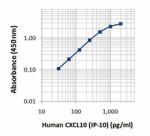

Western blot analysis of 50 ng of recombinant human CXCL10 (...
 Login / Register
Login / Register 







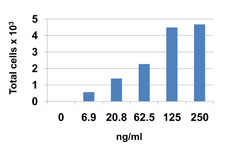
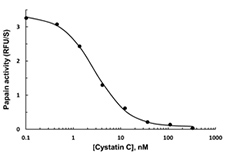
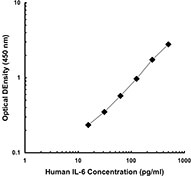



Follow Us